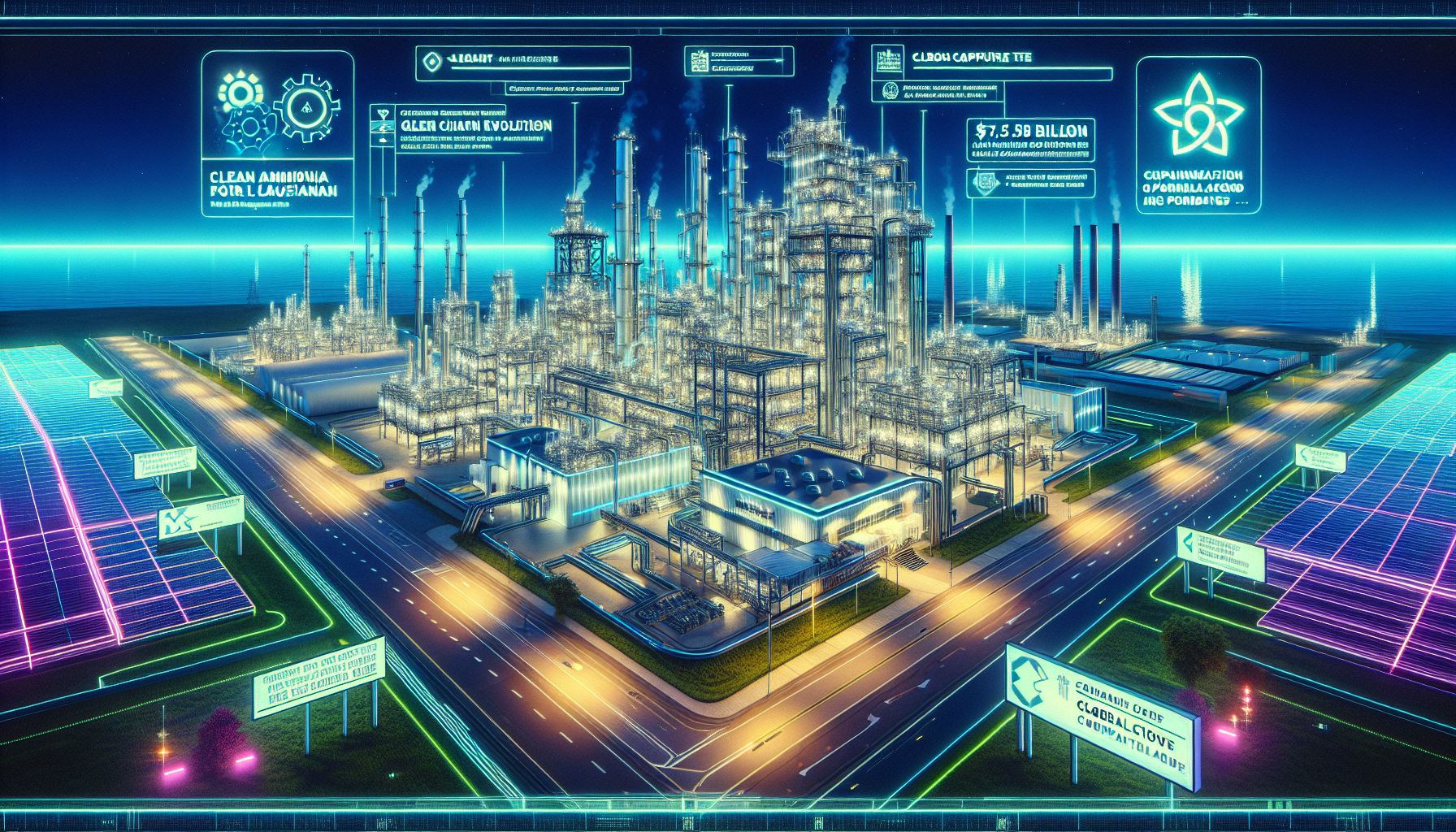Louisiana's $7.5B Green Revolution: World's Largest Clean Ammonia Plant Takes Shape

Houston, Friday, 22 November 2024.
In a groundbreaking development, McDermott has secured the FEED contract for what will become one of the world’s largest clean ammonia facilities. The Louisiana-based project promises 7.2 million tonnes annual production capacity, 3,050 new jobs, and marks a significant leap in sustainable chemical manufacturing. With ExxonMobil’s carbon capture expertise and a stellar consortium of global partners, this $7.5 billion investment isn’t just about clean ammonia - it’s about transforming the Gulf Coast into a green energy powerhouse. Construction begins 2026, with first production targeted for 2029.
A Vision for the Future
When I first heard about the Ascension Clean Energy (ACE) project, I imagined a bustling hive of innovation and collaboration. It’s not every day that you see a project of this magnitude take root in the heart of Louisiana. Spearheaded by Clean Hydrogen Works (CHW) and supported by industry giants like ExxonMobil, Mitsui O.S.K. Lines, and Hafnia, this endeavour is nothing short of a green revolution. The goal? To produce clean ammonia using cutting-edge technology and sustainable practices[1].
The McDermott Advantage
McDermott’s role in this project is pivotal. Their expertise in engineering and construction positions them perfectly to lead the front-end engineering and design (FEED) work. It’s like they’re the architects of a futuristic city, laying down the blueprint for what will be a cornerstone of sustainable industry. Their experience with mega-projects and on-time delivery records make them the ideal choice for such a colossal task[2].
The Green Giants
ExxonMobil’s involvement brings a layer of carbon capture and sequestration (CCS) technology to the mix, promising to reduce emissions significantly. This technological marriage between clean ammonia production and carbon capture is set to establish new industry standards. Imagine a world where our chemical manufacturing processes not only meet demand but do so sustainably. That’s the dream the ACE project is bringing to life[3].
Economic Impact
The project isn’t just about environmental responsibility; it’s a massive economic boon for the region. With the creation of 350 permanent jobs, 1,500 peak construction jobs, and an additional 1,200 indirect jobs, the local economy is poised for a major uplift. These aren’t just numbers—they represent livelihoods, opportunities, and growth for the community, with average wages expected to surpass $116,000 annually[4].
Future Prospects
Looking forward, the ACE project is expected to make its final investment decision by late 2025, with production starting in 2029. If I were to look into the crystal ball, I’d see a vibrant, sustainable future for the Gulf Coast, powered by clean energy solutions. This project is more than just a facility; it’s a beacon of what’s possible when collaboration meets innovation. The Gulf Coast, with its rich industrial history, is transforming into a hub of green energy, setting an example for the world to follow[5].